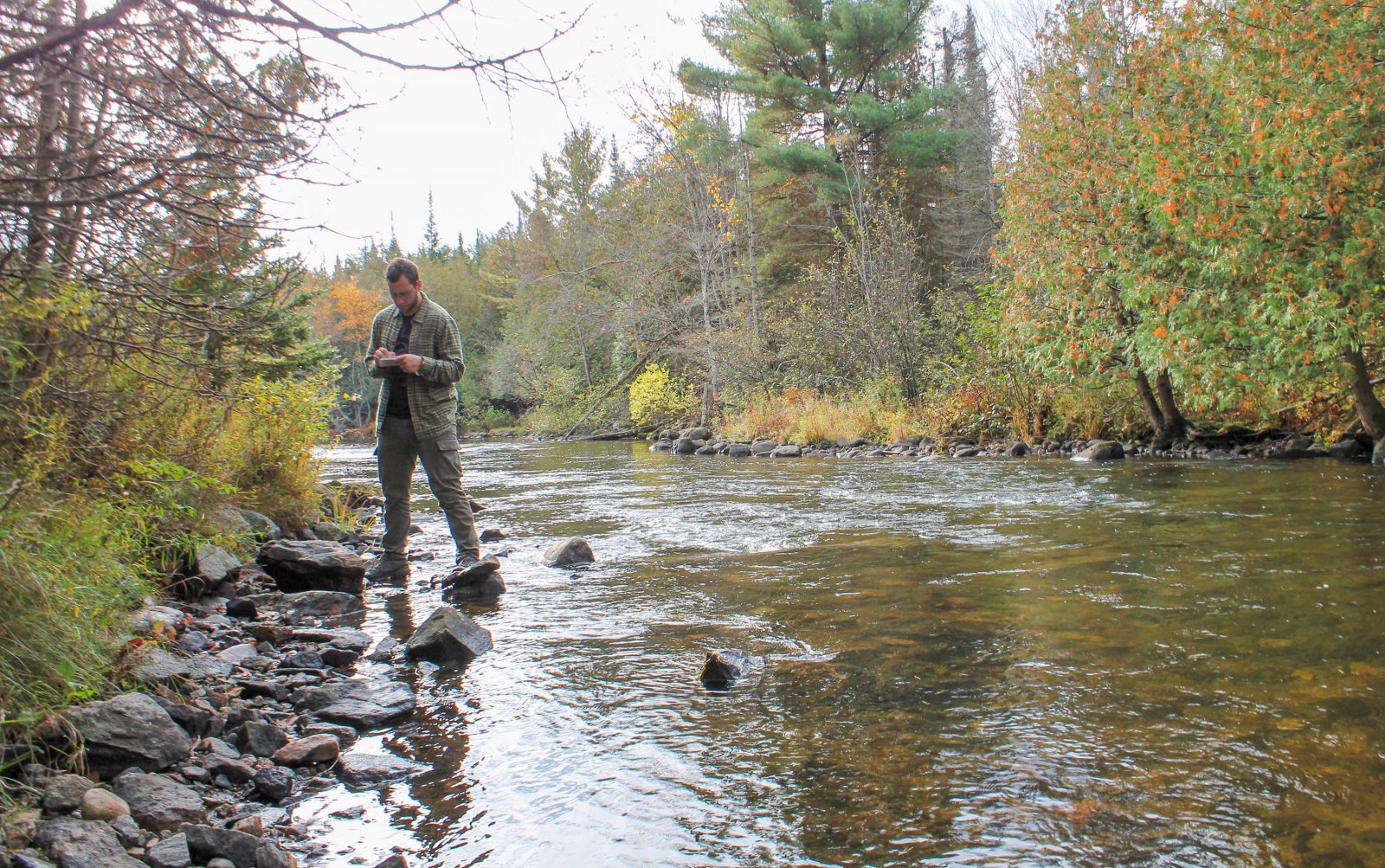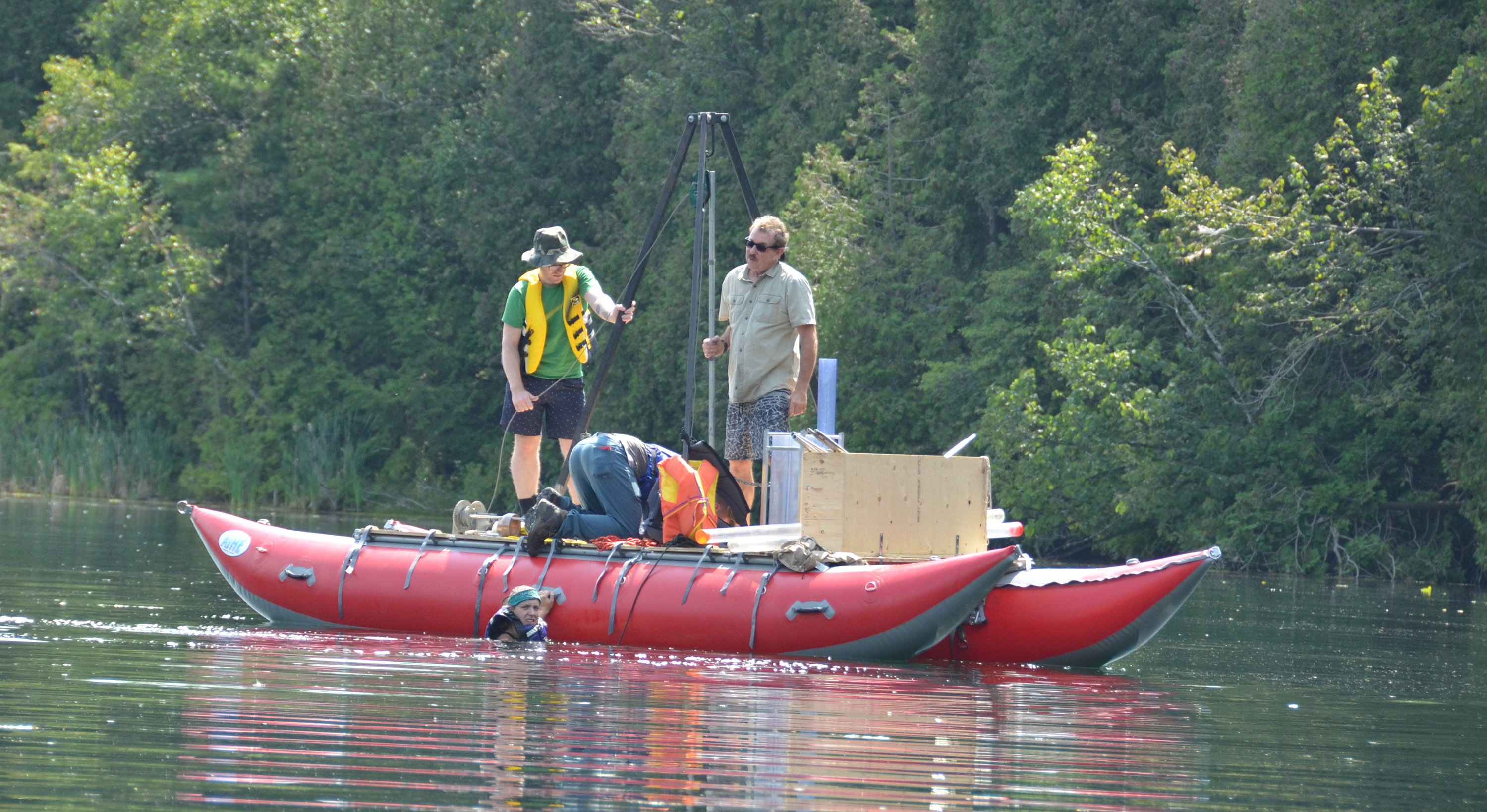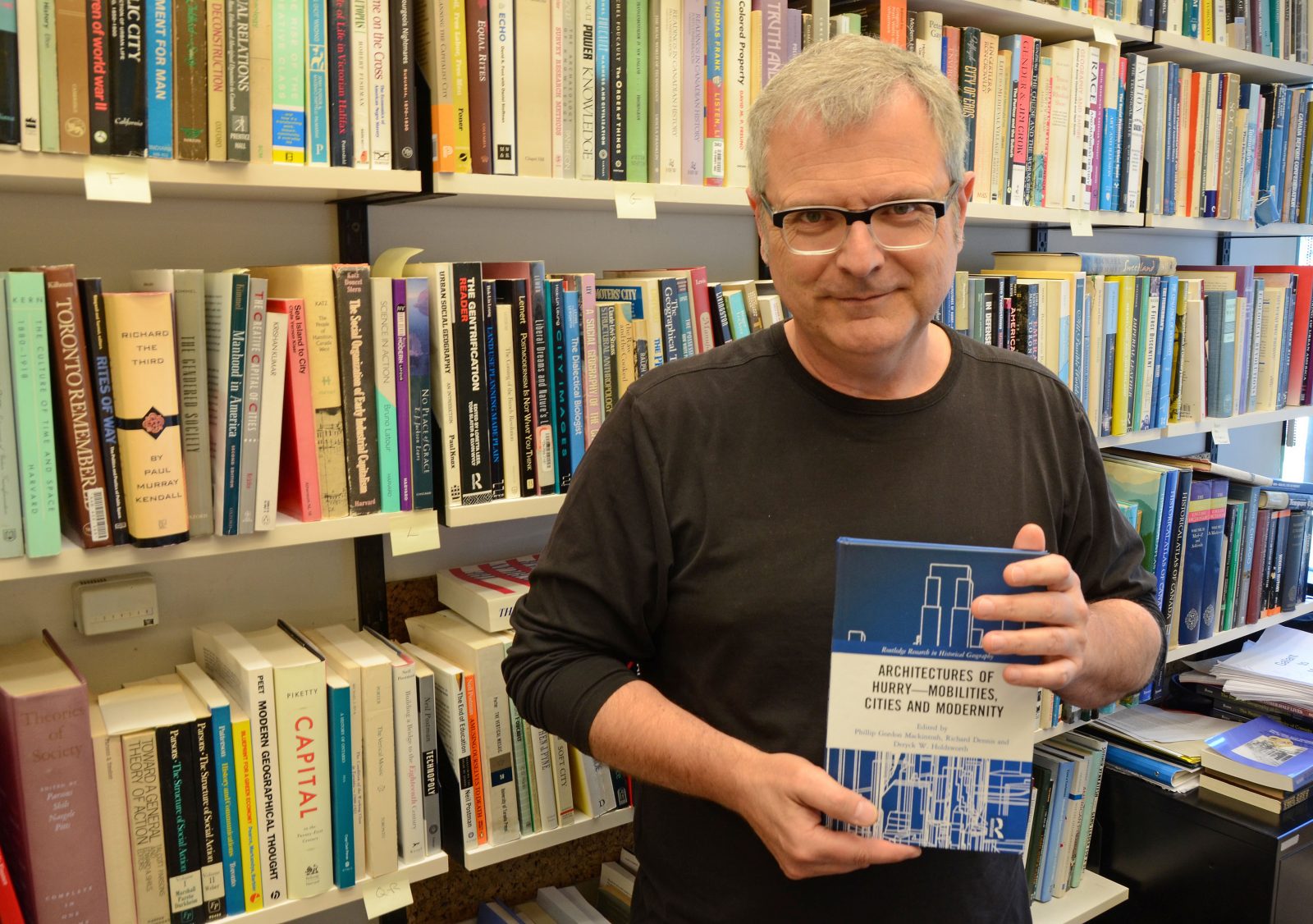 Fourth-year Brock Geography student Daniel Marshall assists his classmates with recording water quality observations on the Drag River during a weeklong experiential education exercise in central Ontario.
Fourth-year Brock Geography student Daniel Marshall assists his classmates with recording water quality observations on the Drag River during a weeklong experiential education exercise in central Ontario.A crisp fall breeze and the smell of pine recently welcomed Daniel Marshall into a different type of learning environment.
The fourth-year Geography student can normally be found deep in the Mackenzie Chown Complex learning about physical geography. But, during this year’s fall Reading Week, an experiential education trip took him out of his comfort zone and into the field.
Along with 34 other participants from the Geography and Tourism Department’s Physical Geography and Human Geography and Tourism Studies field courses, Marshall took part in a weeklong experiential learning exercise in central Ontario. The annual trip is designed to connect in-class learning with practical on-site research skills that are necessary for all geographers.
“Sometimes in the classroom you lose focus on what you are actually studying,” Marshall said. “To be in the field and make the observations myself and get my feet muddy allowed everything to come full circle.”
While the human geographers and tourism students went into Peterborough to gather data, Marshall and his fellow physical geographers went further afield to places such as Lochlin, Ont., where they collected soil and water samples.
“We brought a specialized tool and took a sample from about four metres down,” he said. “We got a core that, if interpreted in a lab, could have given us 10,000 years worth of data about the area.”
The ability to conduct applied research and maintain detailed field notes is a skill Geography and Tourism Studies Department Chair Michael Pisaric considers invaluable.
“The field courses provide our students with hands-on experience that allows them to put their training and academic studies into practice by connecting first-hand the classroom learning they have done to the real world,” he said.
Longstanding teaching assistant Darren Platakis, who has worked with countless students in his 10 years helping with the trip, echoed the sentiment.
“Seeing the growth in their confidence, whether it’s conducting face-to-face interviews or using a new piece of equipment, is very satisfying,” he said.
Gaining practical experience with tools of the trade provides students with a leg up for when their studies are completed.
“Nobody wants to hire an advisor who has no field experience,” Marshall said. “An exercise like this makes you more marketable as a person.”
With days of working to develop useful skills came a sense of unity among participants on the department-wide trip.
“At the end of the day, we were all reunited as a large group and it was nice to be together,” he said. “We had a few large outdoor gatherings around the fire pits and shared stories of our day. It gave us the opportunity to become a close-knit group and contributed to the closeness of the department as a whole.”
The work of the students in the area has also led to lasting conservation efforts in the local community.
“Because of the work of previous classes from Brock, the Lochlin Esker and Wetlands site we visited has achieved Provincially Significant Wetland and Area of Natural and Scientific Interest status,” he said.
For Marshall, the most eye-opening portion of the week was seeing the way the concepts learned in the classroom actually existed in the environment.
“You can read as much as you want on a topic, but until you’re actually looking at that feature or talking to those people, there is a huge divide between what the textbooks say and the actual observations you make in the field,” he said. “It really worked for me to help close that gap and approach things in a more well-rounded way.”
As he prepares to use his newfound experience to take on a thesis and apply for master’s programs, Marshall hopes that others will consider studying Geography as well.
“Geography is everything and how it’s related,” he said. “Anyone who likes nature, the environment or being outside already loves geography. So, why not study it as well?”
Visit the department’s website to learn more about Brock University’s Geography and Tourism experiential opportunities.
Reposted from The Brock News.















